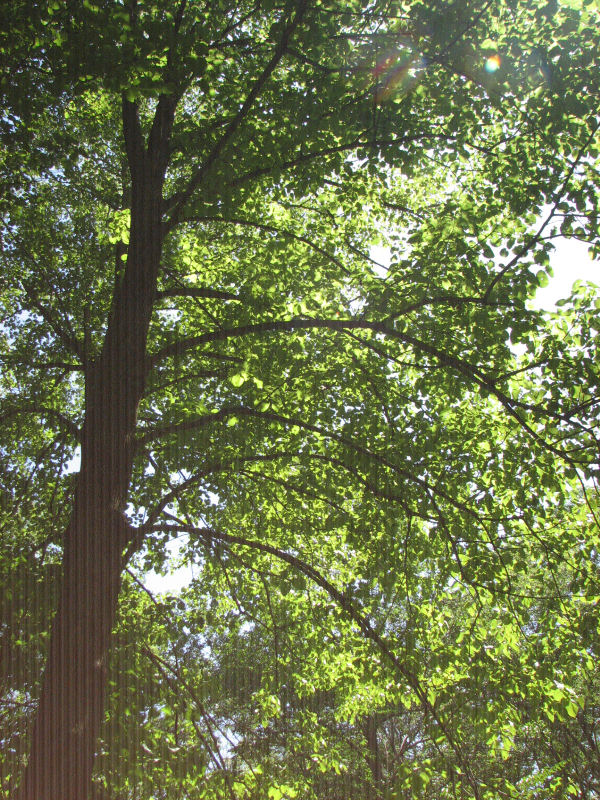This tree isn't growing in my garden, unless you define my garden
very broadly, but I wanted to post a picture so people can see what I study for a living.
Tilia americana, the American basswood or linden, grows in mesic forests throughout the eastern half of North America. The range may or may not be further divided into multiple species, but in any classification scheme the northern populations are
T. americana. Lucy Braun said that the Minnesota populations are the most "pure", untainted by introgression from other tilias. I don't know about that, but the trees in Minnesota forests were immense and beautiful.
 Tilia americana
Tilia americana, photo from Nerstrand-Big Woods State Park, Minnesota
My dissertation will focus on phylogeny and population genetics of the North American
Tilia taxa. Past "splitty" taxonomists found upwards of 20 species, but recent treatments lump them all together as one. I hope that my molecular data will be the tiebreaker. The over-under is 3. Who's in?




